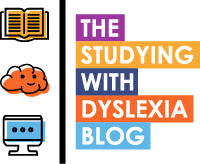With new assistive technology software being made available on the Disabled Students Allowance scheme here in the UK, this article shines a spotlight on what the DSA is offering dyslexic students today to help them through their time as an undergraduate.
This article is brought to you by Sonocent.
Some of you will know that I am a father of two daughters with Specific Learning Differences. One has dyslexia and the other ADHD with dyspraxia (DCD).
Both of my daughters got to do their undergraduate studies and one aspect of their university experience that I absolutely loved was that they both qualified for support from the DSA, the Disabled Students Allowance.
Here in the UK it is recognised that at undergraduate level, students with disabilities are at a disadvantage unless they get support to help them with their studies.
The UK Gov definition of disability is as follows:
“You’re disabled under the Equality Act 2010 if you have a physical or mental impairment that has a ‘substantial’ and ‘long-term’ negative effect on your ability to do normal daily activities.”
The above definition comes from the UK Gov Disabilities Act 2010 includes dyslexia and other specific learning differences such as ADHD, DCD, ASD, Dysgraphia and Dyscalculia.
If a student entering university life is neurodiverse then they are entitled to apply for the following support that is listed on the DSA website.
“What DSAs can pay for.
You can get help with the costs of:
Specialist equipment, for example a computer if you need one because of your disability,
Non-medical helpers,
Extra travel because of your disability,
Other disability-related costs of studying.
You may get a new computer if you do not already have one, or your current one does not meet your study needs. More information will be provided to you if you’re assessed as needing a new computer.
You’ll need to pay the first £200, which is the minimum cost that any student is likely to incur when buying a computer.
DSAs do not cover disability-related costs you’d have if you were not attending a course, or costs that any student might have.”
During the 2018 to 2019 academic year the DSA were offering the following:
Currently the 2019 to 2020 figures have not been published at time of writing.
An example of technology that could be used to support learning on the DSA.
One of the major challenges of being dyslexic is taking notes. Dyslexia can affect concentration, handwriting, working memory and fatigue. When having to take notes in class this can seem like a huge challenge.
The DSA, provide authorise a wide range of technologies to help with study for students with dyslexia. More recently they authorised a new product called Glean which helps students take notes in lectures by actually recording the audio from lectures and allowing the student to annotate the recording. Being able to playback a lecture and compare it with the Powerpoint slides used as well as the students annotations is a powerful way of going back over the content for revision and recall purposes.
Other technologies include text to speech (technology for reading out text), speech to text (dictation), mind mapping software, screen tinting software, citation software and so on as well as specific hardware products that aid the use e.g laptop, microphones, specialist keyboards etc
How does a student get to have all this support?
To get this support a student must have a diagnosis of dyslexia (or other condition) and be prepared to subject themselves to a ‘Needs Assessment’ which is performed across the UK in one of many DSA authorised assessment centres.
Once the assessment is complete, the assessor makes recommendations on which technology to use. The student will need to pay for the first £200 of the equipment in order to pay for the laptop (this cost is a likely cost of any student with or without a disability) but the rest of the provision is quite generous.
The DSA will also fund study skills coaching and some of the consumables that would need to be used with the provision.







